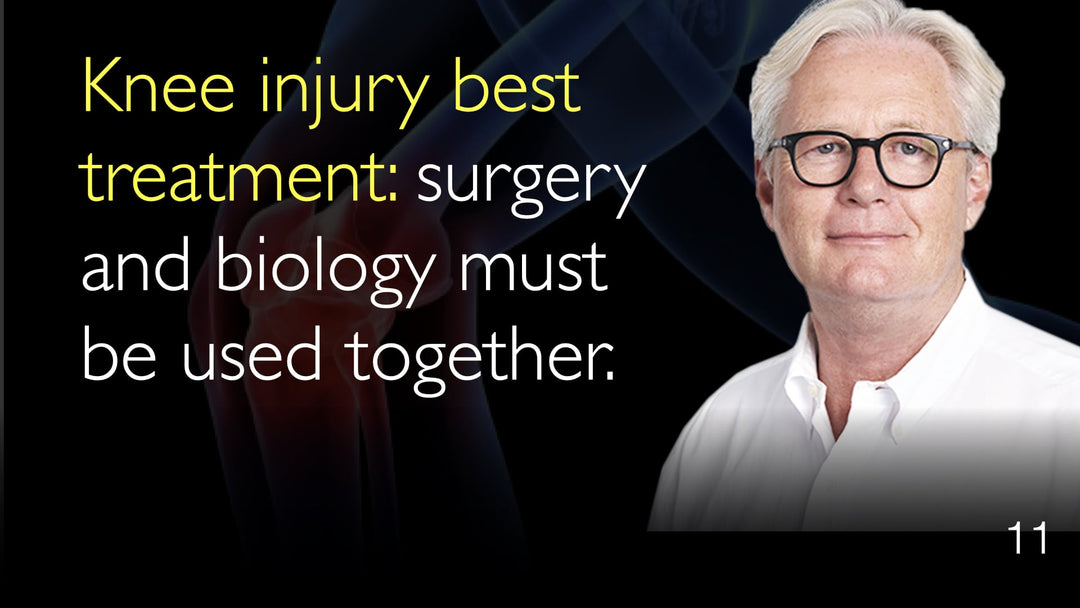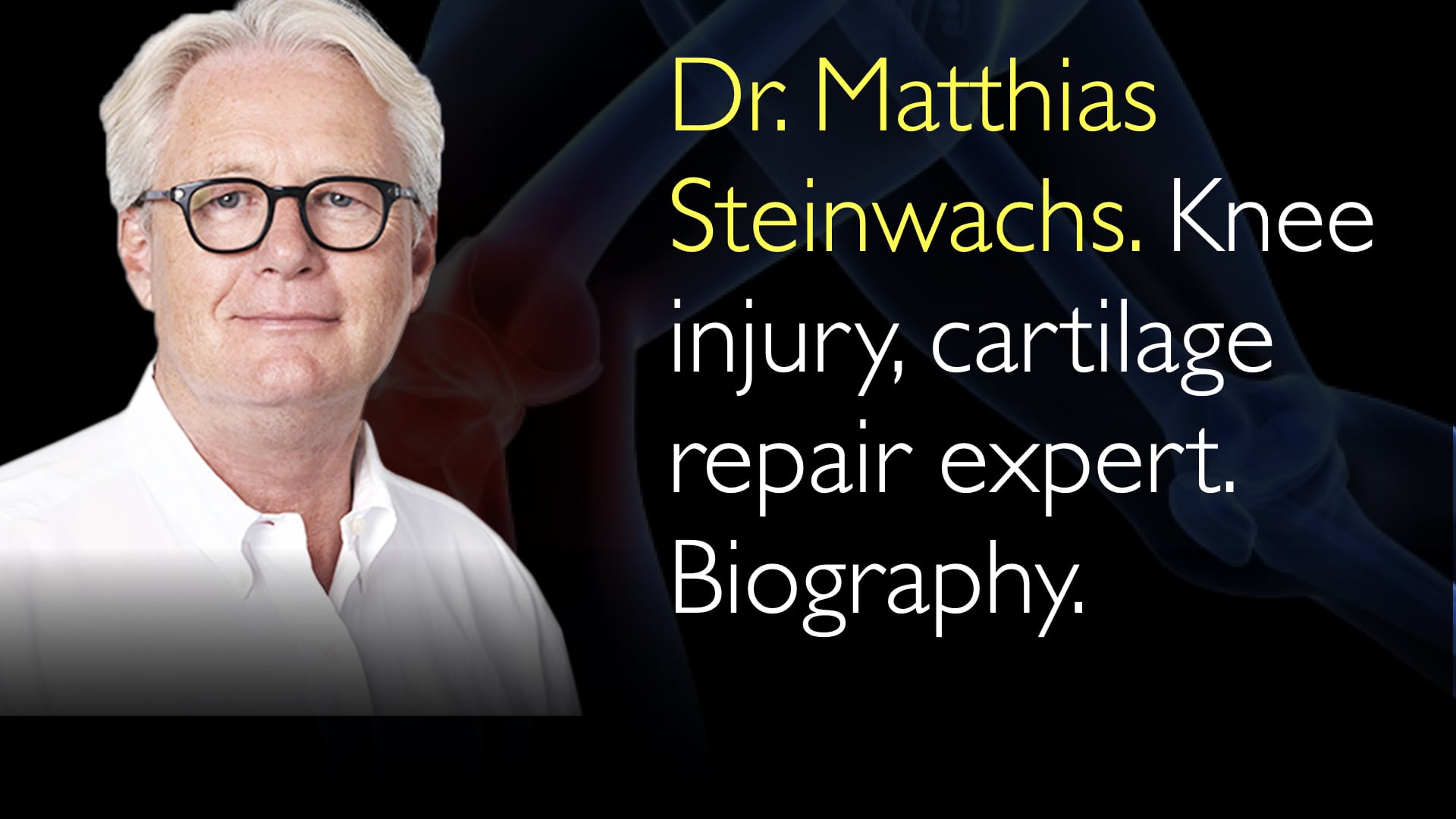Dr. Matthias Steinwachs, MD, en førende ekspert inden for behandling af knæskader og bruskreparation, forklarer den afgørende sammenhæng mellem biologi og kirurgi. Han understreger, at mekaniske løsninger alene ikke er tilstrækkelige for en optimal helbredelse. Dr. Steinwachs fremmer en behandlingsfilosofi, der bygger på kroppens egne biologiske processer. Denne tilgang kræver præcis timing og skræddersyede metoder for hver enkelt patient. Målet er at opnå fremragende resultater gennem minimalt invasive og vævsbesparende procedurer.
Integration af biologi og kirurgi til avanceret behandling af knæskader
Spring til afsnit
- Biologi og mekanik i knæbehandling
- Diagnostiske metoder til biologiske indsigter
- Behandlingsstrategi og filosofi
- Kirurguddannelse og rette timing
- Minimalt invasiv bruskreparation
- Fremtiden for knæbehandlingsfremskridt
- Fuld transskription
Biologi og mekanik i knæbehandling
Dr. Matthias Steinwachs, MD, præsenterer et grundlæggende skift i behandlingen af knæskader. Han understreger, at selvom mekaniske løsninger er afgørende, udgør de ikke hele svaret. Ledets iboende biologiske information spiller en central rolle i helingsprocessen. En vellykket behandlingsstrategi må derfor inddrage og samarbejde med denne biologi.
Denne integrerede tilgang går ud over klassisk kirurgi. Den fokuserer på at udnytte kroppens egne reparationsmekanismer for at forbedre patientresultater.
Diagnostiske metoder til biologiske indsigter
At afdække leddets biologiske tilstand kræver avancerede diagnostiske metoder. Dr. Matthias Steinwachs, MD, fremhæver betydningen af disse værktøjer i sin praksis. De giver afgørende indsigt i, hvordan leddet fungerer, og dets evne til at hele.
Denne diagnostiske viden muliggør en mere skræddersyet behandlingsplan. Den hjælper med at afgøre, hvilke biologiske processer der kan understøttes for en effektiv genopretning.
Behandlingsstrategi og filosofi
Kerneprincippet er at følge biologien, ikke modarbejde den. Dr. Matthias Steinwachs, MD, forklarer, at dette er den største forskel i hans tilgang. Behandlingen skal indgå i en sammenhængende strategi, der respekterer biologiske principper.
Denne filosofi sikrer, at indgreb understøtter den naturlige heling. Det fører til mere bæredygtige og effektive resultater for patienter med ledskader.
Kirurguddannelse og rette timing
En nøglekomponent er kirurguddannelse i den rette timing og metode. Dr. Matthias Steinwachs, MD, understreger, at kirurger skal lære disse kritiske nuancer. Det rette sted for indgreb er lige så vigtigt for hver enkelt patient.
Denne viden forvandler en standardprocedure til en biologisk informeret behandling. Den er afgørende for at mestre minimalt invasive og vævsbesparende teknikker.
Minimalt invasiv bruskreparation
Dr. Matthias Steinwachs, MD, er fortaler for minimalt invasive behandlinger. Disse procedurer er en direkte anvendelse af hans biologisk-mekaniske integrationsfilosofi. De sigter mod at reparere brusk, mens man bevarer så meget sundt væv som muligt.
I sin samtale med Dr. Anton Titov, MD, knyttede han denne tilgang til forbedret patientgenopretning. Den reducerer traume og udnytter kroppens eget helingspotentiale.
Fremtiden for knæbehandlingsfremskridt
Området for knæskadebehandling er under konstant udvikling. Dr. Steinwachs' arbejde peger mod en fremtid, hvor biologi står centralt i plejen. Opdateret viden om disse teknikker vil yderligere forfine bedste praksis.
Dr. Anton Titov, MD, bemærkede den globale betydning af dette arbejde. At hjælpe patienter verden over kræver, at man indfører disse avancerede, integrerede behandlingsmodeller.
Fuld transskription
Dr. Anton Titov, MD: Professor Matthias Steinwachs, er der et emne eller et spørgsmål, som jeg ikke stillede, men burde have stillet? Er der noget i din interesse eller din erfaring, som du gerne vil dele med vores seere?
Dr. Matthias Steinwachs, MD: Nej, det er der ikke. Jeg synes, dine spørgsmål var meget fokuserede, og de dækkede størstedelen af mit arbejde.
Min filosofi i arbejdet er at forstå biologien i leddet. Mekaniske løsninger fremstår som primære, og de er meget vigtige. Men der er biologisk information i, hvordan leddet fungerer og healer, som man kan udnytte med gode resultater og afdække ved at bruge sine diagnostiske metoder.
Hvis man integrerer rollen af biologisk information i leddets healing i sin filosofi og sin behandlingsstrategi, så følger man biologien og ikke imod den. Dette må kirurgen lære: hvad er det rette tidspunkt, den rette metode og det rette sted for behandlingsmetoder for hver patient med ledskade.
Dette er, vil jeg sige, den største forskel mellem mit arbejde og det klassiske kirurgiske arbejde.
Dr. Anton Titov, MD: Professor Matthias Steinwachs, mange tak for denne meget informative samtale. Og tak for at hjælpe patienter fra hele verden.
Vi håber at vende tilbage til dig i fremtiden for at få opdateret viden om den minimalt invasive behandling af knæskader og selvfølgelig inden for bruskreparation og vævsbesparende behandlinger. Mange tak!
Dr. Matthias Steinwachs, MD: Tak til dig også. Det var en stor fornøjelse!





